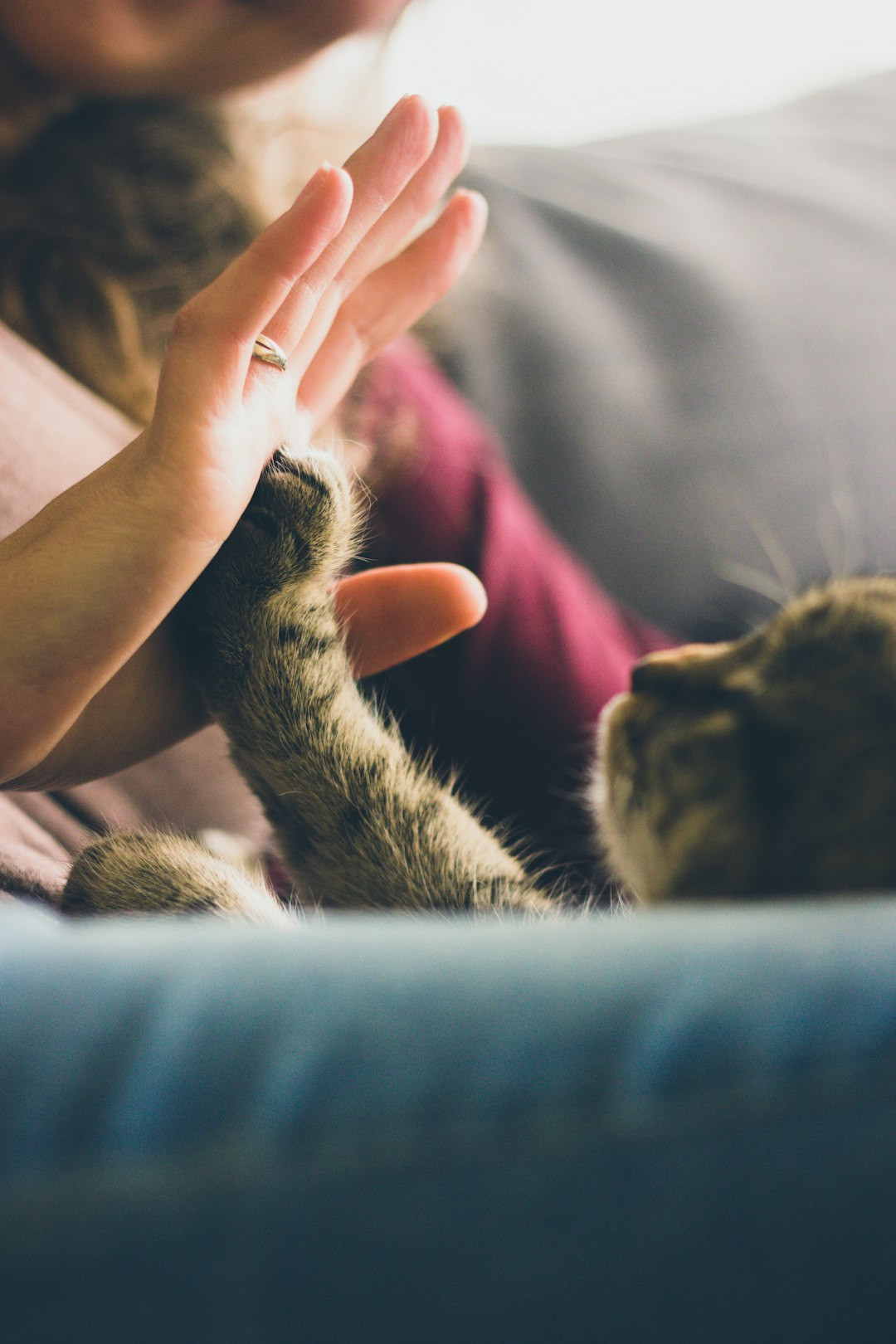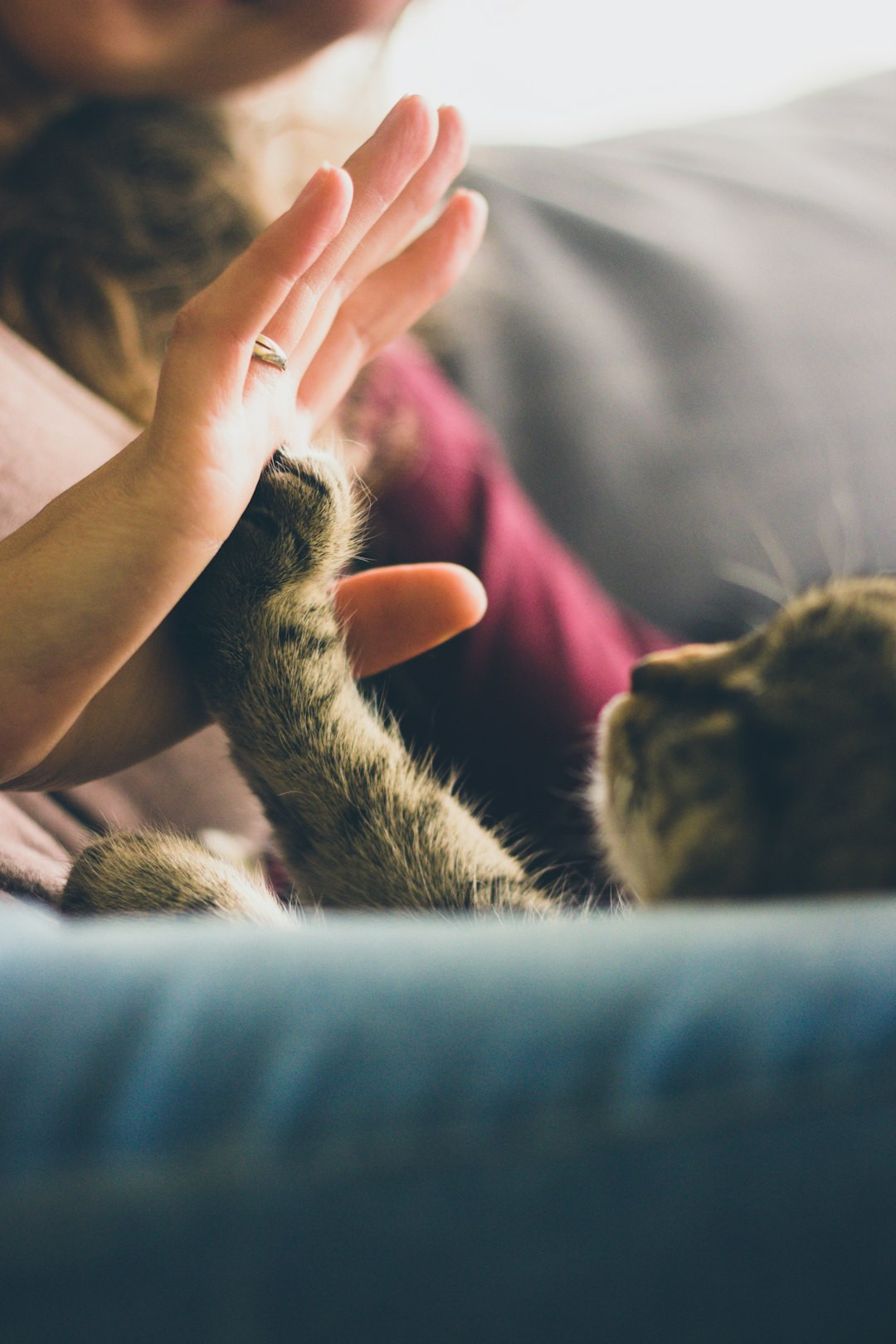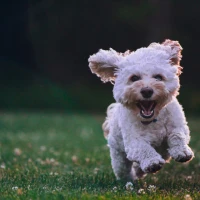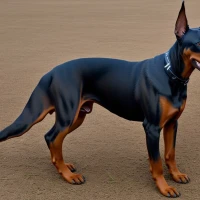Embark on a journey through the mist-clad slopes and uncover the secrets of a gentle giant—the Great Pyrenees. These noble beasts have stood sentinel over mountain flocks for centuries, a true guardian wrapped in a cloak of soft, snowy fur. Discover their majestic presence and unwavering loyalty as we unveil the saga of this regal breed. The Great Pyrenees awaits to capture your heart and fulfill its timeless role: the indomitable Mountain Guardian. Join us as we explore the world of these serene protectors and the enchanting lore that surrounds them.
Breed Overview

The Great Pyrenees, known for their impressive size and gentle demeanor, have long been celebrated as guardians of livestock and noble companions. Originating from the Pyrenees Mountains straddling France and Spain, these majestic dogs were bred to deter predators like wolves and bears, and thus come with a rich heritage of protection and loyalty.
Breed Overview: The average Great Pyrenees stands between 25 to 32 inches tall at the shoulder and weighs anywhere from 85 to over 100 pounds, with males being larger than females. The breed is easily recognizable by its thick, weather-resistant double coat, commonly white or with shades of gray, tan, or reddish-brown. This coat allows them to withstand cold temperatures, a remnant of their history as mountain dogs.
One of the hallmarks of the Great Pyrenees is their calm and patient temperament, often described as a gentle giant. Despite their size and strength, they are known for being affectionate with family, including well-behaved children. However, they do retain a strong protective instinct, which makes early training and socialization paramount to ensure they are well-adjusted.
Great Pyrenees dogs are independent thinkers, a trait that was necessary for solitary work with flocks in rough mountain terrain. While this intelligence can make them excellent problem solvers, it can also lean into stubbornness, which might pose a challenge during training efforts. Consequently, consistent and positive training methods are most effective with this breed.
Exercise is important for the Great Pyrenees despite their low to moderate energy levels. Regular walks and playtime are necessary to keep them physically and mentally stimulated, though they are not as high-energy as some other working breeds. Their size does not make them ideal candidates for apartment living; a home with a spacious, securely fenced yard is more suited to their needs.
Health-wise, Great Pyrenees can be prone to a few breed-specific issues such as hip dysplasia, bone cancer, and certain inherited conditions. Responsible breeding practices and regular veterinary care are crucial to managing these risks. Their lifespan typically ranges from 10 to 12 years.
Their thick coat requires regular grooming to prevent matting and to manage shedding. During their biannual heavy shedding seasons, more frequent brushing will help to remove loose fur and maintain the health and appearance of their coat.
In summary, the Great Pyrenees is a majestic and protective breed that excels as both a guardian and a companion. With their gentle nature, imposing presence, and storied past as mountain guardians, they make a noble addition to any family ready to accommodate their size and exercise needs, while providing the guidance, training, and care these beautiful animals deserve.
Great Pyrenees Breed Characteristics

The Great Pyrenees, revered as a majestic guardian of the mountains, is renowned for its sheer elegance, immense physical strength, and gentle temperament. As a breed that has historically been tasked with the protection of flocks and their human companions from predators, the Great Pyrenees boasts specific characteristics that make it an exceptional breed.
Size and Appearance:
On average, adult Great Pyrenees are considerable in size, with males reaching heights of 27 to 32 inches at the shoulder and females slightly smaller. Their weight ranges from 85 to over 100 pounds, with a solid, muscular build hidden beneath their thick fur.
One of the most distinguishing features of the Great Pyrenees is their coat. Typically, they sport a weather-resistant double coat that is mostly white, sometimes with markings of gray, tan, reddish-brown, or badger. This thick fur is an adaptation to their origins in the cold mountain climates of the Pyrenees, providing insulation against harsh weather.
Temperament:
The personality of the Great Pyrenees is a fine balance between gentle affection and steadfast protectiveness. Great Pyrenees dogs are known for their calm demeanor and loyalty to their family members. While they may be loving and patient, especially with children, they are also very protective and can be wary of strangers, making them excellent watchdogs.
Working Instincts:
The breed has a strong natural instinct to guard. This is derived from centuries of selective breeding for the purpose of protecting livestock from predators such as wolves and bears. They are intelligent and capable of independent decision-making, which was essential when guarding flocks without direct human supervision.
Training and Exercise:
Due to their size and independent nature, early training and socialization are crucial for the Great Pyrenees. They respond best to patient and consistent training methods. Although not excessively active, they do require regular exercise to maintain their health and prevent boredom, which can lead to destructive behaviors.
Health Considerations:
Generally, Great Pyrenees are healthy dogs, but like many large breeds, they can be prone to certain health issues, such as hip dysplasia, bone cancer, and inherited conditions like canine bloat. Regular veterinary check-ups and a proper diet are critical for maintaining their health.
Ideal Owners:
The ideal environment for a Great Pyrenees is with an owner who understands large breeds and one who can accommodate the dog’s need for space and exercise. They thrive best in homes with ample room to roam, ideally with a securely fenced yard, as their guarding instincts may drive them to wander in search of something to protect.
The Great Pyrenees is more than just a pet; it is a devoted companion and a formidable protector. Its noble mien and compassionate nature make it a remarkable breed for those who wish to share their lives with a true mountain guardian.
Great Pyrenees Puppies

The Great Pyrenees, known for its colossal presence and serene demeanor, stands as a guardian of both livestock and the home, with roots tracing back to the mountainous terrains of France and Spain. Often referred to as the Gentle Giant, this breed embodies strength, patience, and loyalty, traits that have been honed over centuries of protecting flocks from predators in harsh mountain climates.
Puppies of this majestic breed present with a white, weather-resistant double coat that may have markings of gray, tan, reddish-brown, or badger scattered throughout. This plush coat is more than just a beautiful feature; it serves as effective insulation against extreme temperatures and protection from rough terrain.
The nurturing qualities of the Great Pyrenees make it an ideal family pet, particularly for those with enough space to accommodate a large breed. The puppies are naturally nurturing, showing a remarkable gentle side when interacting with children. Despite their size, they are often patient and protective, displaying a remarkable blend of watchful guardian and affectionate companion.
Training and socialization are crucial from an early age for Great Pyrenees puppies. Their innate vigilance and protective instincts can manifest as stubbornness or reserved behavior around strangers if not properly guided. However, with positive reinforcement and consistent training, these pups grow to exemplify a well-mannered demeanor, reflecting their noble heritage.
Great Pyrenees puppies require ample exercise to ensure physical and mental well-being but typically exhibit a lower energy level compared to other breeds of their size once they reach maturity. Their calm nature doesn’t detract from their need for regular activity, though, as they greatly benefit from walks, play sessions, and opportunities to roam safely within fenced areas.
Healthwise, owners should be attentive to common issues that may affect this breed, such as hip dysplasia, bone growth disorders, and certain hereditary conditions. Regular veterinary check-ups and a balanced diet are paramount to maintaining their health and well-being.
Raising a Great Pyrenees puppy can be a truly rewarding experience, culminating in a bond with a loyal and loving guardian of the home. Prospective owners must commit to the responsibility that comes with such a dignified breed—providing ample space, enduring patience, and a loving environment for the puppy to thrive. In return, they will find themselves in the company of a majestic and benevolent companion, a true Mountain Guardian through and through.
Temperament & Intelligence of the Great Pyrenees 🧠

The Great Pyrenees, known for their majestic and noble demeanor, is a breed that has for centuries been revered as a protector and guardian of livestock in mountainous regions. These dogs are not just striking in appearance with their thick, white coats and imposing size, but they also possess a temperament and intelligence well-suited to their traditional role.
One of the most notable aspects of the Great Pyrenees’ temperament is their calm and patient nature. This breed exudes a serene confidence that often translates into a good-natured and gentle disposition, making them excellent companions, particularly in families with children. Despite their size, they are known to be very loving and affectionate with their family members, demonstrating a deep bond and loyalty.
This breed is also known for its protective instincts. The Great Pyrenees has a natural inclination to guard and does so with a composed and watchful manner. These dogs are often wary of strangers and will typically stand between their family or flock and any perceived threat. Their protective behavior is deeply ingrained, a characteristic that makes them exceptional watchdogs and guardians.
When it comes to intelligence, the Great Pyrenees is highly capable and smart. This intelligence, however, is accompanied by a strong will and an independent streak, traits that were necessary for a dog that had to make decisions while guarding flocks in isolated mountainous terrain. These dogs are thinkers and may not always immediately obey commands, especially if they don’t see the point or if they are weighing their own assessment of a situation.
Training a Great Pyrenees can be a challenge due to their independent nature. They are not as eager to please as some other breeds might be, which means patience and consistency are key. Positive reinforcement methods work best, as this breed can become stubborn and unresponsive to harsh training tactics. Early socialization and training are essential to help them develop into well-mannered and sociable dogs.
The Great Pyrenees’ intelligence is also evident in their problem-solving abilities. They are capable of navigating complex environments and can work through challenges with measured consideration. This mental capacity, again, serves them well in their traditional role as livestock guardians where they need to assess and react to threats appropriately.
In summary, the Great Pyrenees combines a regal and gracious temperament with a sharp and discerning intellect. These traits make them not only stunning companions but also reliable and autonomous protectors. Owners who understand and respect the breed’s nature, and who provide them with the love, training, and leadership they require, will find in the Great Pyrenees a dignified and rewarding member of the family.
Are These Dogs Good for Families? 👪

The Great Pyrenees, known as the majestic guardian of the mountains, is a breed that has served as a protector of flocks for centuries. These large, powerful dogs are known for their calm, patient demeanor, and are often considered good family pets for those who can accommodate their needs.
When considering a Great Pyrenees as a family dog, it’s important to evaluate several aspects of the breed and their compatibility with family life:
-
Temperament: Great Pyrenees are known for being affectionate with their families. They tend to be gentle and patient, making them good companions for children. However, their protective nature can sometimes manifest as wariness around strangers, so it’s important to socialize them from a young age.
-
Size: These are large dogs, typically weighing between 85 to 160 pounds, which means they need ample space to move around. Due to their size, they can be overwhelming to small children without proper supervision and training.
-
Exercise: While they may seem imposing, the Great Pyrenees does not usually require excessive exercise. They are relatively low-energy but do need regular walks and space to roam, ideally in a fenced yard or enclosure to prevent them from wandering off, which is a common trait of the breed.
-
Grooming: These dogs have a thick, double coat that requires regular grooming. Brushing a few times a week and more during their shedding season is necessary to maintain their coat and prevent matting.
-
Training: Great Pyrenees are intelligent, but they also have an independent streak that can make training a challenge. Consistency and patience are key. They respond well to positive reinforcement rather than harsh methods.
-
Guarding instincts: These dogs were bred to guard livestock, so they have a natural instinct to protect. This can be a positive for families wanting a watchful dog but could also pose challenges in terms of behavior and containment.
-
Lifespan and health: With a lifespan of around 10 to 12 years, the Great Pyrenees can be a long-term family member. However, as with any large breed, they are prone to certain health issues such as hip dysplasia and bloat, so it’s important to be prepared for potential veterinary care.
-
Adaptability: The breed can adapt to various living situations but tends to do best in homes with a lot of space, such as rural or suburban environments. They can live in colder climates due to their thick fur.
When considering adding a Great Pyrenees to a family, it’s essential to think about the time, space, and attention the dog will need. Their gentle nature often makes them a good fit for families, but their size, exercise requirements, and independent temperament may pose challenges for some households. With proper care, training, and socialization, a Great Pyrenees can indeed be a wonderful and loyal family companion.
Does This Breed Get Along With Other Pets? 🐶 😽

The Great Pyrenees, known for their calm demeanor and gentle disposition, tend to be good-natured dogs that can get along with other pets. However, their ability to coexist peacefully with other animals largely depends on their individual personality, training, socialization, and the circumstances of each encounter.
Generally, the Great Pyrenees has a strong protective instinct, which can translate into them being good guardians for other animals in the household, including cats and smaller pets. They are often patient and tolerant, which helps in forming bonds with other pets. Despite their large size, they can be quite gentle with smaller animals and understand how to moderate their strength.
Early socialization is key for any dog breed, including the Great Pyrenees, to ensure they learn to interact positively with other pets. Introducing them to a variety of animals in a controlled and positive manner from a young age can help foster good relationships.
This breed’s herding heritage can sometimes result in a strong prey drive, though. That said, a Great Pyrenees may chase smaller animals if this instinct is triggered. Proper training can mitigate this behavior, and the breed is often capable of learning the difference between family pets and actual prey.
Great Pyrenees may also exhibit some level of wariness or caution around unfamiliar animals, so gradual introductions are advised. When it comes to dogs outside their family unit, a Great Pyrenees can vary in response. Some may be sociable and friendly, while others may show dominance or territorial behavior. This is why understanding individual temperament and providing continuous, positive, and controlled opportunities for interaction is crucial.
Potential owners should bear in mind that while Great Pyrenees can get along well with other pets, close supervision, especially in the early stages of relationship building, is important to ensure all pets are safe and comfortable with one another.
Things to Know When Owning a Great Pyrenees

The Great Pyrenees is a breed famed for its protective instincts and regal appearance. These dogs were originally bred to guard livestock on snowy mountain slopes and have a range of physical and personality traits that potential owners should be aware of.
-
Size and Space: Great Pyrenees are large dogs, with males often exceeding 100 pounds and females slightly less. They need ample space to move around, so a large yard or living area is ideal. Apartment living can be challenging for a dog of this size unless they are given plenty of outdoor exercise.
-
Temperament: Known for being calm, patient, and confident, they make excellent family pets. Their protective nature, however, means they can be wary of strangers and may require careful introduction to new people.
-
Grooming Needs: They have a thick, double coat that requires regular grooming to prevent mats and tangles. Daily brushing is highly beneficial during shedding season to help manage the amount of hair they lose.
-
Exercise Requirements: Despite their size and calm demeanor, Great Pyrenees need regular exercise to maintain their physical and mental health. Walks, hikes, and playtime in a secure area are good ways to keep them fit.
-
Training and Socialization: Early socialization and consistent training are essential for a well-behaved Pyrenees. They can be independent and sometimes stubborn, so training may require patience and positive reinforcement techniques.
-
Health Considerations: Common health issues for the breed include hip dysplasia, bone cancer, and certain eye conditions. Regular veterinary checks are important to catch any problems early.
-
Climate Tolerance: Their thick coats are well-suited to cold weather, but they can struggle in hot climates. In warmer environments, it’s crucial to have shaded areas and plenty of water available, and to avoid excessive exercise during the hottest parts of the day.
-
Watchdog Capabilities: Great Pyrenees dogs are natural watchdogs, and they can be prone to barking, especially at night. Training can help manage this, but prospective owners should be aware of their vocal nature.
-
Lifespan: Typically, a Great Pyrenees can live from 10 to 12 years, so commitment to the breed is a long-term endeavor that requires consideration of their needs throughout their entire life.
-
Affinity for Roaming: These dogs have a tendency to wander, and owing to their heritage of guarding livestock over wide territories, they may roam if given the chance. A secure, fenced space is critical to keeping them safe.
In conclusion, owning a Great Pyrenees is a rewarding experience for those who appreciate their blend of gentleness and protectiveness. Potential owners should be prepared for the responsibilities that come with a large, active dog and should provide the care, exercise, and love these loyal companions deserve.
Food & Diet Requirements 🦴

The Great Pyrenees, a breed known for its majestic presence and stoic guardianship, has specific dietary needs that owners should carefully consider to maintain their health and vitality. Originally bred to be livestock guardians in the Pyrenees mountains between France and Spain, these dogs are large, with a thick, weather-resistant coat, which plays a role in their nutritional requirements.
Energy Needs
Given their size and activity level, Great Pyrenees require a considerable amount of food to maintain their energy. However, despite being big dogs, they are not particularly high-energy, meaning they do not need as many calories per pound as smaller, more energetic breeds. Their food intake should be carefully monitored to prevent obesity, which is a common health issue in the breed.
Puppy Nutrition
Great Pyrenees puppies, like all large breed puppies, have specific food needs for their growth. Puppies should be fed a large-breed puppy formula that helps regulate growth to prevent bone and joint disorders. Overfeeding and too much calcium can lead to orthopedic problems, so it’s essential to follow a vet-recommended feeding schedule.
Adult Diet
As adults, the Great Pyrenees will do well on a high-quality dog food designed for large breeds. These formulated diets help to ensure that the dogs get all the necessary nutrients while maintaining a healthy weight. A balance between protein, fats, and carbohydrates is crucial to support their muscular bodies and energy levels.
Ingredients and Nutrients
- Protein: Look for diets that have a good source of animal protein, such as chicken, beef, or fish, to support muscle maintenance and repair.
- Fats: Essential fatty acids like omega-3 and omega-6 support a healthy coat and skin, which is particularly important for a breed with a thick double coat like the Great Pyrenees.
- Fiber: Fiber assists in digestion and helps to keep the gastrointestinal system running smoothly.
- Glucosamine and Chondroitin: These are beneficial for joint health, something to be mindful of as this breed can be prone to hip dysplasia.
Portion Control and Feeding Schedule
It’s recommended to establish a regular feeding schedule, typically twice a day for adult Great Pyrenees. Portion control is important to prevent weight gain; owners should measure food carefully and adjust according to the dog’s age, weight, and activity level.
Avoid Overfeeding
Great Pyrenees can easily become overweight, leading to a multitude of health issues. Treats should be given in moderation, and high-calorie human foods should generally be avoided, especially those that are toxic to dogs.
Water Intake
Access to clean, fresh water at all times is essential for the Great Pyrenees, especially considering their thick fur which can make them prone to overheating.
Consulting with a Veterinarian
Veterinarian advice is invaluable when it comes to your Great Pyrenees’ diet. Individual needs can differ, and a vet can help tailor a feeding regime that’s optimal for your dog’s particular health status and lifestyle.
Proper food and diet are fundamental in ensuring a long, healthy, and active life for your Great Pyrenees. By being mindful of their nutrient needs, you can ensure that this noble mountain guardian remains a happy, healthy, and reliable companion for years to come.
Exercise 🐕

The Great Pyrenees, a breed that heralds from the Pyrenees Mountains of southern France and northern Spain, is known for its magnificent stature and calm yet protective temperament. Often referred to as Pyrenean Mountain Dogs, they have historically served as guardians for flocks of sheep against predators like wolves and bears.
When it comes to exercise, the Great Pyrenees requires a moderate amount, though one might be surprised given their large size and working background. Their exercise routine should be tailored to their unique needs as a breed and as an individual dog. Despite their size, they are not known for high energy levels, but they still need daily physical activity to maintain their health and well-being.
These dogs benefit greatly from walks, which not only help to keep them physically fit but also provide them with mental stimulation. Walking your Great Pyrenees gives them a chance to explore their environment, which is crucial for their curious nature. However, it’s important to remember that these dogs were bred for a cool mountain climate, so exercise should be done during the cooler parts of the day during hotter weather to prevent overheating.
As puppies, Great Pyrenees should have controlled exercise to avoid damage to their growing bones and joints. Activities such as hiking can be introduced slowly and should always be at a pace that suits the dog. They may enjoy gentle hikes through varied terrain which can also fulfill their need for exploration and mild exertion.
In addition to walks, Great Pyrenees may enjoy playtime in a secure area. They often have a gentle way of playing, but because of their large size, they may not realize how powerful they are. It’s recommended to supervise their play with smaller animals or children.
It’s paramount for owners to understand that, while these dogs may seem content to lounge around for much of the day, skipping their exercise routine can lead to boredom and potential behavior issues. Regular exercise helps in managing your Great Pyrenees’ weight, as they can be prone to obesity if overfed and under-exercised.
Integrating mental exercise is equally important. Training practices that engage their minds such as obedience, problem-solving activities, or even agility (modified to their size and capabilities) can be beneficial. These activities foster a stronger bond between the dog and the owner and keep the dog’s mind sharp.
The majestic Great Pyrenees thrives when their exercise regime balances their physical and mental needs. As a guardian of the mountains, it may no longer be rounding up sheep, but with the right amount of exercise and stimulation, it will stand guard over your heart and hearth with the same vigilance and serenity that have characterized the breed for centuries.
Training 🎾
The Great Pyrenees, also known as the Pyrenean Mountain Dog, is a breed that commands respect with its size, power, and serene disposition. As majestic guardians of the mountains, bred to watch over flocks, their history is as robust as their presence. However, to harness their protective instincts and ensure they’re well-behaved family members, proper training is paramount.
Training a Great Pyrenees presents unique challenges and rewards. These dogs are intelligent but can have a stubborn streak, often confusing as defiance. The truth is, they were bred to make independent decisions when guarding sheep in the mountains, hence their sometimes aloof obedience.
When training, it is vital to begin early, ideally during puppyhood. The window of socialization closes rapidly, and considering their eventual size, it’s essential to establish good habits and social behavior from the start. Consistency and a gentle but firm hand in training sessions are crucial for success. Harsh methods are not effective and can harm the relationship between the dog and its owner.
Positive reinforcement techniques are highly effective with Great Pyrenees dogs. They respond well to treats and praise, though their motivation may be less about pleasing their owner and more about the reward. Therefore, trainers need to be extra engaging. Using a training 🎾 (tennis ball) or other toys can be a great motivation during training sessions, especially for recall and retrieval exercises which can otherwise be a challenge with this independent breed.
While Great Pyrenees may not show the same enthusiasm for obedience as some breeds, they can excel at it with the right approach. Patience and understanding their nature—that they are thinking creatures accustomed to making judgments on their own—are key. Obedience classes are recommended, and activities like agility (modified for their size) can be surprising fun for them.
One of the breed-specific challenges is their nocturnal tendency to patrol. Early training should include setting boundaries and nighttime routines to help manage their guardian instincts. Teaching them to distinguish between common nighttime sounds and real threats is essential to prevent nuisance barking.
Leash training is another critical aspect. The Great Pyrenees can be quite powerful, and allowing them to pull on the leash can lead to challenging walks. Training them to walk nicely on a leash using the right harness and rewards ensures pleasant outings for both dog and owner.
Great Pyrenees are also known to be wanderers. Proper training coupled with secure fencing helps mitigate the risk of them following their nose or guardian instincts beyond safe boundaries.
Ultimately, training a Great Pyrenees requires time, dedication, and adaptability. These mountain guardians may not always fit the mold of eager-to-please domestic dogs, but with the right training, they become both versatile companions and noble protectors, truly distinguished in their class.
Grooming ✂️

Great Pyrenees dogs, known for their impressive size and gentle temperament, are also recognizable by their thick, fluffy coats. This signature coat serves as protection against harsh mountain climates, making them historically well-suited as guardians of livestock in rugged terrain. Despite their low-maintenance reputation, grooming is an essential part of caring for a Great Pyrenees, not only for aesthetic reasons but also for their overall health and comfort.
Grooming a Great Pyrenees can be quite an undertaking due to their double-layered coat, consisting of a dense, woolly undercoat and a long, coarse outer coat. Regular grooming sessions help to prevent mats and tangles, remove dead fur and skin, and keep their coat clean and shiny. Here are some essential grooming tips for maintaining the majestic appearance of a Great Pyrenees:
-
Brushing: Given their dense fur, Great Pyrenees should be brushed several times a week to prevent matting and reduce shedding. During their shedding seasons in spring and fall, daily brushing might be necessary. Use a slicker brush or a long-toothed comb to reach into the undercoat.
-
Bathing: Bathing a Great Pyrenees can be a considerable task and shouldn’t be done too frequently to avoid stripping their fur of natural oils. Aim for a bath every few months or when they become particularly dirty. Use a gentle dog shampoo and make sure to dry them thoroughly, as their thick coat can hold moisture.
-
Nail Trimming: Long nails can cause discomfort for any dog, including the Great Pyrenees. Their nails should be trimmed regularly to avoid paw problems and to maintain proper gait.
-
Ear Cleaning: Ears should be checked and cleaned regularly to avoid infections, particularly since their floppy ears can trap moisture and debris.
-
Checking for Burrs and Ticks: If your Great Pyrenees spends time outdoors, especially in grassy or wooded areas, check their coat for burrs, ticks, and other foreign objects that can become entangled in their fur.
Due to the Great Pyrenees’ propensity for independence, it may be beneficial to start grooming sessions early in their life to acclimate them to the process. Make grooming a positive experience by including treats and affection, which can build trust and make your pet more cooperative.
Remember, the grooming process is not only about keeping your dog looking good; it’s also about their physical well-being. Regular grooming allows you to inspect your dog for any abnormalities, such as lumps, sores, or parasites, and thus catch potential health issues early on. With committed grooming, the Great Pyrenees’ majestic presence is not only preserved but serves as a testament to their well-being and the care they receive from their dedicated owners.
Health and Conditions 🏥
Great Pyrenees dogs, also known as the Pyrenean Mountain Dog, are a breed esteemed for their elegance, size, and protective instincts. Originally bred to guard livestock on steep mountainous landscapes, these noble canines are not only companions but also vigilant guardians.
Their health and condition rest on a fine balance of genetics, environment, and care. Being a large breed, the Great Pyrenees is susceptible to certain health issues that prospective owners should be aware of:
-
Bone and Joint Issues: Like many large dog breeds, the Great Pyrenees can suffer from hip dysplasia, a condition where the hip joint doesn’t fit together perfectly, which can lead to arthritis or lameness. Elbow dysplasia and patellar luxation are also concerns. Owners should monitor their dog’s gait and physical condition and ensure appropriate weight management to minimize the stress on the joints.
-
Bloat (Gastric Torsion): This life-threatening condition occurs when the stomach fills with gas and twists. It is a medical emergency that requires immediate attention. To help reduce the risk of bloat, owners should avoid feeding their Great Pyrenees large meals followed by vigorous activity.
-
Skin Conditions: They may be prone to skin issues due to their dense double coats. Regular grooming and checks for ticks, fleas, and hot spots are crucial to maintaining skin health.
-
Eye Conditions: Diseases such as progressive retinal atrophy, which can lead to blindness, and cataracts, are potential eye conditions in the breed. Annual eye exams by a veterinary ophthalmologist can detect early signs of eye health issues.
-
Cancer: Unfortunately, cancer is a leading cause of death in older dogs, including the Great Pyrenees. Early detection through regular veterinary exams is key to management and treatment options.
-
Heart Conditions: These gentle giants can suffer from heart issues, including dilated cardiomyopathy, which affects the heart muscle, leading to a decreased ability to pump blood. Regular check-ups and alertness to symptoms like lethargy, coughing, or difficulty breathing are vital.
-
Ear Infections: Due to their floppy ears, the breed can be prone to ear infections. Keeping ears clean and dry is essential in preventing these painful conditions.
For the Great Pyrenees to thrive and enjoy a full lifespan, which typically ranges from 10 to 12 years, proactive and preventive health care is essential. This should include regular check-ups with a veterinarian, a diet that fulfills their nutritional requirements, and adequate exercise to maintain healthy weight and muscle tone.
In summary, while the Great Pyrenees is a robust and resilient breed, attention to their specific health and condition needs can help them live as healthy and comfortable lives as possible. Prospective and current owners should stay educated about potential health issues and establish a relationship with a trusted veterinarian to guide them in the care of their majestic mountain guardian.
Male vs. Female

The Great Pyrenees, a breed known for its immense size, majestic appearance, and protective instincts, serves as an excellent guardian of both livestock and the family home. When considering the differences between male and female Great Pyrenees, potential owners tend to inquire about various aspects such as size, temperament, and guarding instincts to determine which gender may better suit their needs.
Males in the breed tend to be larger and more imposing, often weighing in the range of 100 to 160 pounds, with their size acting as a deterrent to predators and intruders. Females, while still large, usually weigh slightly less and can be somewhat shorter. This size difference, however, does not diminish the female’s ability to guard and protect.
In temperament, males are often seen as more laid-back and could possibly be less reactive in the absence of a threat, giving them the appearance of a gentle giant, especially within the family environment. In contrast, females may exhibit a more complex temperament; they are frequently described as more nurturing within the family unit, yet they can be more attentive and assertive when it comes to protecting their territory.
Guarding instincts between male and female Great Pyrenees can vary due to individual personality, but both genders possess a strong instinct to guard. Males may have a more pronounced sense of territoriality, marking and patrolling their property extensively. Females, on the other hand, may prioritize the safety of the beings in their care, whether it’s children, smaller pets, or livestock, showcasing a more focused protective behavior.
When it comes to training and socialization, there’s no significant difference between the genders; both males and females require a firm, consistent hand and exposure to various situations to become well-adjusted adults. However, potential owners should consider that females may experience hormonal changes if not spayed, which can impact their mood and behavior. Similarly, males can exhibit more dominant behavior if not neutered.
The choice between a male or female Great Pyrenees may ultimately come down to personal preference and the specific qualities an owner is seeking in a companion and guardian. It’s important to meet and interact with puppies or adult dogs of both genders to determine which individual’s personality aligns best with the prospective owner’s lifestyle and expectations. Regardless of gender, the Great Pyrenees stands as a dignified and reliable breed, suited for those who appreciate the qualities of these majestic mountain guardians.
3 Little-Known Facts About the Great Pyrenees

Great Pyrenees dogs, known for their majestic and commanding presence, are often celebrated as the gentle giants of the canines. Bred to guard livestock on steep mountainous terrain, they exude a serene confidence and a steadfast disposition. Here are three little-known facts about this noble breed:
-
Night Shift Protectors: Historically, Great Pyrenees dogs would work in sync with shepherd dogs, which actively herd flocks during the day. The Great Pyrenees’ primary role was to take the night shift, protecting the sheep from predators under the cover of darkness. Their white coats, which seamlessly blended in with the sheep, allowed them to be stealth guardians, often surprising wolves and other nocturnal predators.
-
Double Dewclaws: Unlike most dogs, the Great Pyrenees have a unique feature on their hind legs – double dewclaws. These extra toes are not vestigial appendages; they serve a purpose. Thought to provide stability on the uneven, rocky terrain of the Pyrenees Mountains, these double dewclaws act as natural snowshoes and also help the dogs grip when climbing or descending steep slopes.
-
Royal Companions: Beyond the pastures, the Great Pyrenees also have a history of nobility. They were the esteemed companions of French aristocracy in the court of King Louis XIV. The breed’s calm demeanor and striking appearance elevated them to a symbol of elegance and grandeur. As such, they were appointed the prestigious title of the Royal Dog of France.
The Great Pyrenees is more than just a guardian; it is a breed steeped in history, with remarkable adaptations suited for its original role as a protector of livestock. While it still retains these instincts, it has also become a loyal and beloved companion in many homes across the world.
1. While Good Guard Dogs, Great Pyrenees Aren’t Generally Aggressive

The Great Pyrenees breed, known for its majestic presence and serene disposition, has carved out a reputation as a reliable guardian, particularly suited for protecting livestock. Historically, this breed’s assignments have included watching over sheep and warding off predators such as wolves and bears in the mountainous regions of Europe. The intrinsic quality of the Great Pyrenees is its ability to guard, a trait that has been honed through centuries of selective breeding.
One of the striking characteristics of the Great Pyrenees is their discerning nature when it comes to guarding. They are well-known for their ability to differentiate between benign and threatening situations. Despite their imposing size and powerful build, Great Pyrenees dogs are not inherently aggressive. They are bred to be watchful and protective, yet they typically showcase a patient and gentle temperament, especially within family environments.
This non-aggressive guarding is reflected in their behavior; a Great Pyrenees often prefers to deter intruders through a formidable presence and deep barks rather than resorting to physical confrontation. Their approach to guarding is more about intimidation and control rather than aggression. This measured behavior makes them excellent protectors for farm animals, as they can effectively manage threats without escalating to violence, protecting their charges with a calm yet assertive stance.
In a family setting, the Great Pyrenees’s nurturing characteristics come to the fore. They are known to be affectionate with children and loyal to their owners, creating a secure and tranquil environment. Their tolerance and gentle nature should not be mistaken for a lack of courage or capability; when the situation truly demands it, the Great Pyrenees can be a formidable opponent, ready to defend their family or flock.
Training and socialization are critical for a Great Pyrenees to become a well-adjusted member of the family. This breed requires a confident owner who can establish leadership and provide the necessary guidance. Through early socialization, these dogs learn to temper their protective instincts and interact appropriately with humans and other animals.
To summarize, the Great Pyrenees is a breed that embodies the spirit of a vigilant guardian rather than an aggressor. Their natural instinct to protect, combined with a composed demeanor, makes them exceptional guard dogs that are far removed from uncontrolled aggression. With proper training and socialization, they serve as gentle giants who offer steadfast protection and companionship.
2. Great Pyrenees Tend to Bark Frequently

The Great Pyrenees is a breed well-known for its vigilant guardianship and protective instincts, which often manifest in their tendency to bark. This behavior is deeply rooted in the breed’s history, as these majestic canines were originally bred to guard livestock in the Pyrenees Mountains of southern France and northern Spain.
Their frequent barking is a natural expression of their duty to alert and deter. It’s crucial for potential owners to recognize this trait, as it is an integral part of the breed’s personality. The bark of a Great Pyrenees is typically a warning to potential predators or strangers, signaling that they are on duty and watching over their domain.
To manage this behavior, training and socialization from a young age are essential. Teaching a Great Pyrenees quiet commands and reinforcing them with positive reinforcement can help in controlling excessive barking. However, completely eliminating their barking is neither practical nor desirable, as it is a part of their inherent nature as a guardian breed.
Owners of Great Pyrenees should also provide ample space and a proper environment where occasional barking does not become problematic for neighbors. With patience and understanding, owners can help their Great Pyrenees find a balance, allowing them to express their protective instincts while maintaining a peaceful home environment.
3. Most Great Pyrenees Are Goofy

The Great Pyrenees breed, often known for its protective and dignified temperament, has a surprising side to its nature: goofiness. Despite their large size and a regal bearing that commands respect, many Great Pyrenees dogs can be quite the clowns when off-duty. This lighthearted behavior often contrasts sharply with their serious demeanor when they’re on guard, faithfully protecting their charges.
Owners of Great Pyrenees can attest to their pets’ penchant for playful antics and silly behaviors that are endearing and sometimes even comedically human-like. Part of this breed’s charm is the unexpected combination of noble guardian and playful companion. They are known for showing bursts of puppy-like energy that can be quite amusing to observe, as they prance and romp despite their imposing stature.
Furthermore, their interactions with family members often include gentle nudges for attention or pawing in a surprisingly delicate manner for such powerful dogs. Their behavior can be unexpectedly delicate and entertaining, further highlighting the duality of their personality. Behind that fluffy white exterior and serious job description, the Great Pyrenees retain a joyful spirit that endears them to everyone around.
This goofy side is important for their well-being, too, as it allows them to bond with their families and relax from their instinctual guard duties. Since they were bred to work independently, this playfulness also demonstrates their intelligence and ability to engage with their environment in different ways. However, as with any breed, it’s important to nurture and understand their playful side, providing them with the attention, training, and exercise they need to be well-rounded companions.
Final Thoughts

The Great Pyrenees, a breed revered for its sheer elegance and protective instincts, stands as the quintessential guardian of the mountains. These noble dogs, with their thick, white fur, have long distinguished themselves as vigilant protectors of livestock, valiantly standing their ground against any threat. Despite their formidable size, the Great Pyrenees possesses a gentle and affectionate disposition, endearing them to families who are lucky enough to share their lives with these majestic animals.
In final thoughts, it bears repeating that the Great Pyrenees is much more than a stunning creature to behold—it is a symbol of steadfastness and serenity. Their history as herd protectors has ingrained in them a deep sense of duty, which, when coupled with their calm and patient temperament, makes them unparalleled companions. It is, therefore, no surprise that those who have had the privilege of their company speak of these dogs not simply as pets but as noble friends and unwavering custodians of their homes. In the stillness of the mountain air, the Great Pyrenees remains, as it has for centuries, a vigilant sentinel and a gentle soul, a true guardian in every sense of the word.











